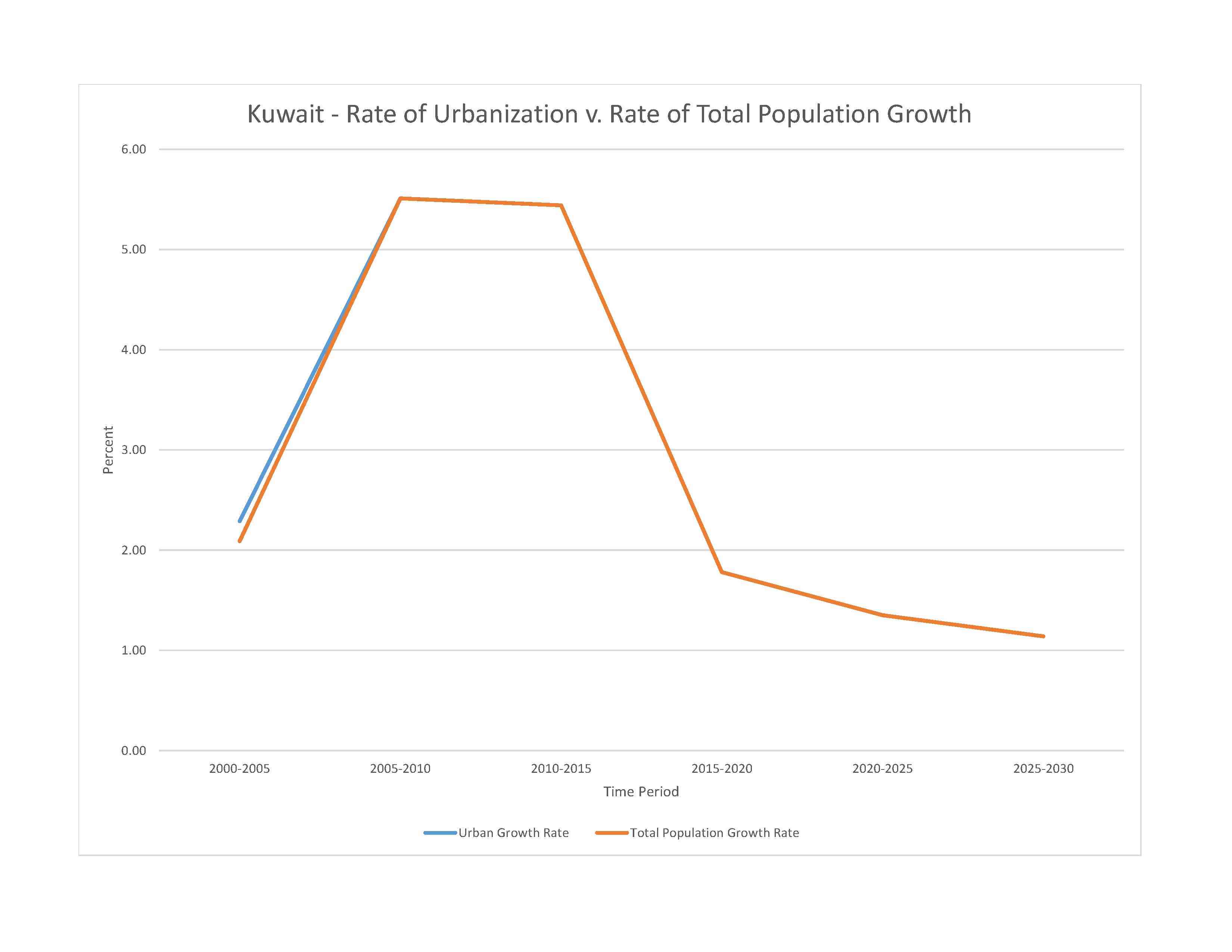
limited natural freshwater resources; some of world's largest and most sophisticated desalination facilities provide much of the water; air and water pollution; desertification; loss of biodiversity
party to: Biodiversity, Climate Change, Climate Change-Kyoto Protocol, Climate Change-Paris Agreement, Comprehensive Nuclear Test Ban, Desertification, Endangered Species, Environmental Modification, Hazardous Wastes, Law of the Sea, Nuclear Test Ban, Ozone Layer Protection, Ship Pollution, Wetlands
signed, but not ratified: Marine Dumping-London Convention
dry desert; intensely hot summers; short, cool winters
agricultural land: 8.5% (2018 est.)
arable land: 0.6% (2018 est.)
permanent crops: 0.3% (2018 est.)
permanent pasture: 7.6% (2018 est.)
forest: 0.4% (2018 est.)
other: 91.1% (2018 est.)
urban population: 100% of total population (2023)
rate of urbanization: 1.35% annual rate of change (2020-25 est.)

0% of GDP (2018 est.)
0% of GDP (2018 est.)
particulate matter emissions: 64.08 micrograms per cubic meter (2019 est.)
carbon dioxide emissions: 98.73 megatons (2016 est.)
methane emissions: 6.21 megatons (2020 est.)
municipal solid waste generated annually: 1.75 million tons (2010 est.)
Indian Ocean drainage: (Persian Gulf) Tigris and Euphrates (918,044 sq km)
Arabian Aquifer System
municipal: 450 million cubic meters (2020 est.)
industrial: 20 million cubic meters (2020 est.)
agricultural: 780 million cubic meters (2020 est.)
20 million cubic meters (2020 est.)
NOTE: The information regarding Kuwait on this page is re-published from the 2024 World Fact Book of the United States Central Intelligence Agency and other sources. No claims are made regarding the accuracy of Kuwait 2024 information contained here. All suggestions for corrections of any errors about Kuwait 2024 should be addressed to the CIA or the source cited on each page.
This page was last modified 04 May 24, Copyright © 2024 ITA all rights reserved.